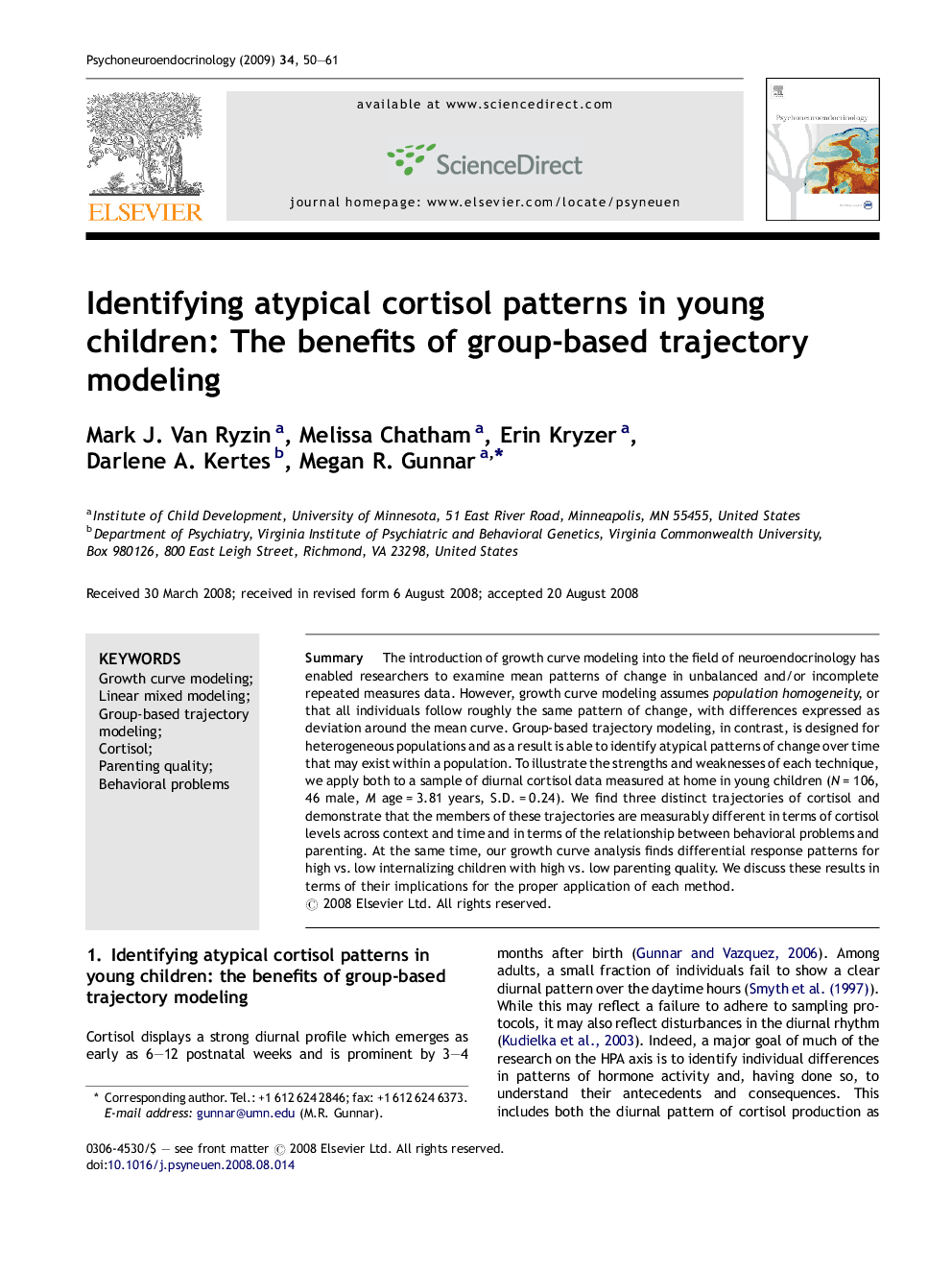| Article ID | Journal | Published Year | Pages | File Type |
|---|---|---|---|---|
| 336569 | Psychoneuroendocrinology | 2009 | 12 Pages |
SummaryThe introduction of growth curve modeling into the field of neuroendocrinology has enabled researchers to examine mean patterns of change in unbalanced and/or incomplete repeated measures data. However, growth curve modeling assumes population homogeneity, or that all individuals follow roughly the same pattern of change, with differences expressed as deviation around the mean curve. Group-based trajectory modeling, in contrast, is designed for heterogeneous populations and as a result is able to identify atypical patterns of change over time that may exist within a population. To illustrate the strengths and weaknesses of each technique, we apply both to a sample of diurnal cortisol data measured at home in young children (N = 106, 46 male, M age = 3.81 years, S.D. = 0.24). We find three distinct trajectories of cortisol and demonstrate that the members of these trajectories are measurably different in terms of cortisol levels across context and time and in terms of the relationship between behavioral problems and parenting. At the same time, our growth curve analysis finds differential response patterns for high vs. low internalizing children with high vs. low parenting quality. We discuss these results in terms of their implications for the proper application of each method.
